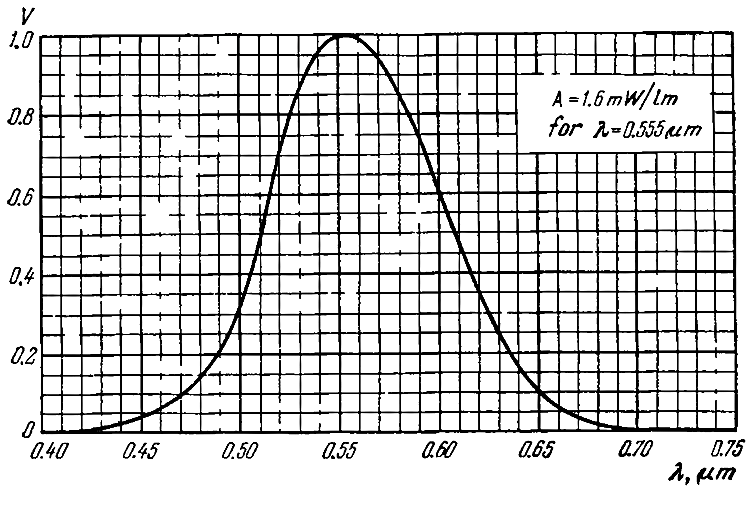The luminous flux of a 1 W sodium vapour lamp is more than that of a 10 kW source of ultraviolet radiation. Comment.
Step by step video & image solution for The luminous flux of a 1 W sodium vapour lamp is more than that of a 10 kW source of ultraviolet radiation. Comment. by Physics experts to help you in doubts & scoring excellent marks in Class 12 exams.
Updated on:21/07/2023Topper's Solved these Questions
- PHOTOMETRYBOOK - HC VERMACHAPTER - PHOTOMETRYEXERCISE - Objective 1
11 Videos
- PHOTOMETRYBOOK - HC VERMACHAPTER - PHOTOMETRYEXERCISE - Objective 2
4 Videos
- PHOTOMETRYBOOK - HC VERMACHAPTER - PHOTOMETRYEXERCISE - Worked Out Examples
4 Videos
- PHOTO ELECTRIC EFFECT AND WAVE PARTICLE DUALITYBOOK - HC VERMACHAPTER - PHOTO ELECTRIC EFFECT AND WAVE PARTICLE DUALITYEXERCISE - Exercise
2 Videos
- SEMICONDUCTOR AND SEMICONDUCTOR DEVICESBOOK - HC VERMACHAPTER - SEMICONDUCTOR AND SEMICONDUCTOR DEVICESEXERCISE - exercises
35 Videos
Similar Questions
Knowledge Check
Calculate the number of photons emitted per second by a 10 watt sodium vapor lamp. Assume that 90% of the consumed energy is converted into light. Wavelength of sodium light is 590nm. h=6.62×10−34Js
A1.67×1018B1.67×1020C2.67×1019D3.67×1023If the wavelength of light emitted by a sodium vapour lamp is 5893 A then the numebr of photons emitted in 5 hour by a 50 W lamp will be
A7.4×1020 photonsB4.46×1022 photonsC2.7×1024 photonsD5.4×1023 photonsPhotometry:
The measurement of light as perceived by human eye is called photometry. Photometry is measurement of a physiological phenomenon, being the stimulus of light as received by the human eye, transmitted by the optic nerves and analysed by the brain. The main physical quantities in photometry are (i) the luminous intensity of the source, (ii) the luminous flux or flow of light from the source and (iii) illuminance of the surface. The SI unit of luminous intensity (I) is candela (cd). The candela is the luminous intensity, in a given direction, of a source that emits monochromatic radiation of frequency 540×1012 Hz and that has a radiant intensity in that direction of 1/683 watt per steradian. If a light source emits one candela of luminous intensity into a solid angle of one steradian, the total luminous flux emitted solid angle is one lumen (1m). A standa o incandescent light bulb emits approximately 1700 lumens.
Unit of luminous flux is:ACandelaBSteradianCNitDLumen
A point isotropic source emits a luminous flux Φ=101m with wavelength λ=0.59μm. Find the peak strength values of electric and magentic fields in the luminous flux at a distance r=1.0m from the osurce. Make use of the curve illustrated in Fig.

View SolutionThe luminous flux of a monochromatic source of 1 W is 450 lumen wa^−1. Find the relative luminosity at the wavelength emitted.
View SolutionA circular area of radius 1.0 cm is placed at a distance of 2.0 m from a poit source.Teh source emits light uniformluy in al directions. The line joining the sorce to the dcentre of the area is normal to the area. It ils found that 2.0×1−3 lumen of luminous flux is incident on the area. Calculate the total luminous flux emitted by the soure and teh luminous intensity of the source along the axis of the area.
View SolutionPhotometry:
The measurement of light as perceived by human eye is called photometry. Photometry is measurement of a physiological phenomenon, being the stimulus of light as received by the human eye, transmitted by the optic nerves and analysed by the brain. The main physical quantities in photometry are (i) the luminous intensity of the source, (ii) the luminous flux or flow of light from the source and (iii) illuminance of the surface. The SI unit of luminous intensity (I) is candela (cd). The candela is the luminous intensity, in a given direction, of a source that emits monochromatic radiation of frequency 540×1012 Hz and that has a radiant intensity in that direction of 1/683 watt per steradian. If a light source emits one candela of luminous intensity into a solid angle of one steradian, the total luminous flux emitted solid angle is one lumen (1m). A standa o incandescent light bulb emits approximately 1700 lumens.
The SI unit of luminous intensity is:
View SolutionPhotometry:
The measurement of light as perceived by human eye is called photometry. Photometry is measurement of a physiological phenomenon, being the stimulus of light as received by the human eye, transmitted by the optic nerves and analysed by the brain. The main physical quantities in photometry are (i) the luminous intensity of the source, (ii) the luminous flux or flow of light from the source and (iii) illuminance of the surface. The SI unit of luminous intensity (I) is candela (cd). The candela is the luminous intensity, in a given direction, of a source that emits monochromatic radiation of frequency 540×1012 Hz and that has a radiant intensity in that direction of 1/683 watt per steradian. If a light source emits one candela of luminous intensity into a solid angle of one steradian, the total luminous flux emitted solid angle is one lumen (1m). A standa o incandescent light bulb emits approximately 1700 lumens.
What is photometry?
View Solution
